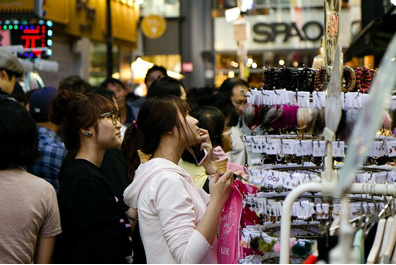The Disappearing Face Of Mainstream Retailing Setting
The internet has revolutionized human life by being able to provide instant and quick access to information. Not only that, it has also improved how we communicate with others via our social media networks, e-mail addresses and voice chats. It has also improved the everyday services that we usually encounter—from banking, booking plane tickets, and even conducting business and the bigger picture of retail marketing.
You might be totally aware of the current online retailing setting, or what others usually call online marketing. A single click can help you browse over a store’s website for the products you need. Another click to choose your item, fill-out certain info sheets, pay with your credit card or COD, and you’re good-to-go. Relieved? But come to think of it, will this be the trend in retailing from now on? And what will happen to the mainstream retailing setting as it continues to deliver the same quality of products by only using the same traditional method that it has been using way back then?
A Look Back at the Mainstream Retailing Selling
Photo by tragrpx via Pixabay
To further understand the current retail industry situation, let’s take a look back at five remarkable periods in the history of retail.
In the 1900s, the local corner stores were able to dominate the retail industry. It was part of the local culture back then to walk in a corner store and shop for the basic items that they need. Some of the choices were limited because you’d be able to find more options in bigger cities.
Come 1940s, the automobile was a huge hit in the US and this has also greatly affected the retail scene. With automobiles, you can go to different places and carry more stuff from the shop to your home. The retail industry moved from the basic local corner stores to department stores and general merchants.
The years of 1950-1970 has allowed the explosion of suburbia and population boom to open larger air malls, mass retailers and strip centers. This timing is also perfect for the creation of TV ads for the retailers.
The Consolidation culture from 1970-1990 or what we call the Big Box stores had allowed its players to create value players, club stores and category killers. This move drove a lot of smaller local merchants away.
And then fast forward to the 1990s-2013, we enter into the digital culture or e-commerce frontier. Some call it the Amazon era but this period has really shook the entire retail industry. 7 of the 8 largest US retailers in 1980 had been either bankrupt, acquired or considered irrelevant.
But what is the future of retailing, specifically the online retailing industry?
Trending: #OnlineRetailing
In 1995, Amazon launched an online book seller. Experts consider amazon as the online market maker for leading the way to online shopping. In the same year, eBay was also launched to introduce an auction mechanism into the mainstream retailing.
While in 1996, Hotmail launched e-mail on the web, and it opened the world of online communications. This has also allowed the increase of internet users worldwide, from 16 million in 1995 to almost 3 billion in 2013.
With Amazon and eBay, the retailing marketing scene in the internet has allowed almost everyone to sell anything in the internet—from a jewelry shop that sells moissanite rings to a simple college student who just wants to make extra money from selling her old books.
But what makes people shift towards online retailing?
Retailing Going Online
Photo by Kaboompics via Pixabay
Most people say that it’s in the efficiency, fast and hassle-free service in the internet. Online retailing has also allowed every person like you to establish a career at the comfort of your home—from freelancing to selling clothes to baking cupcakes for online customers. If you dread the 8-5 working hours, your friends will always pop up the idea of giving you career tips at home which you can easily start.
Of course, the number 1 reason for shifting to online retailing is the lower start-up costs. If you’d go the traditional way and open a physical store, you will need to address concerns such as rent, utility expenses, taxes, insurance, hiring employees, etc. With online retailing, the start-up cost is only a fraction of the expense of a traditional store.
For an online retailer to create a retail website, starting your retail web development is just easy as clicking the mouse. He/she should only anticipate web development costs, hosting and domain name for the website, SSL certificate, and monthly fee from a preferred payment gateway.
And don’t forget one of the primary reasons for retail to go online: its potential customer reach. In traditional setting, it may decrease your potential customers immensely since you are only catering to the people in your area if they visit your store. Go online and you’ll have a massive reach, particularly around the world.
Not only that, but here’s another exciting thing for online retailing: you can measure results through several online tools for online marketing. Your visibility strategy to your customers can be implemented anywhere in the world thanks to the power of search engine optimization and online marketing. This marketing strategy works and online business owners are starting to understand that by targeting specific demographics, they can reach more target customers in the internet.
Click and Scroll Down Further
Online marketing has indeed enhanced how retail works. From social media marketing that enables you to give out offers in Facebook to conducting content marketing strategies in the form of articles, photos and videos to generate traffic in your website and making use of social media metrics to effectively engage and connect with your customers. By effectively engaging with your customers, you might even attract other retailers for a possible virtual retailing collaboration.
The Debate: Mainstream or Online?
Photo by Kaboompics via Pixabay
In a debate at the Bloomberg Businessweek website, users were asked, “Consumers no longer need to touch and feel products in a physical store. Pro or con?”
Pehr Luedtke of PowerReviews defended his pro standing stating that “The convenience and depth of the online shopping experience—and powerful relevance of social networks—results in more educated shoppers whose research online has an impact on their purchases offline”. He cited websites such as Gap.com’s “Quick Look” feature that allows buyers to view a product’s color and texture details. He further stressed his point that smart consumers have experienced a convenient shopping experience–through online tools, social media–and they will soon continue to demand for it.
On the other hand, David Bell of the Wharton School of University of Pennsylvania stands by his con argument. Yes, virtual retailing practices such as online shopping has changed our life for the good but it is a complement to the traditional way of going to the shop. He also points out that there are items that still need a complete sensory inspection (touch, taste, feel, smell) that makes these specific items difficult to sell online. And traditional shoppers still consider the whole process of shopping; observing, seeing, chatting, driving, etc.
And for these arguments, you might wonder if traditional mainstream retailing selling is here to stay. Yes it will, but it needs to strike a balance with the fast-paced online retailing industry and future retail trends. It should not directly compete but instead complement the whole shopping experience so that users will have a balanced shopping experience as well, both online and offline.











